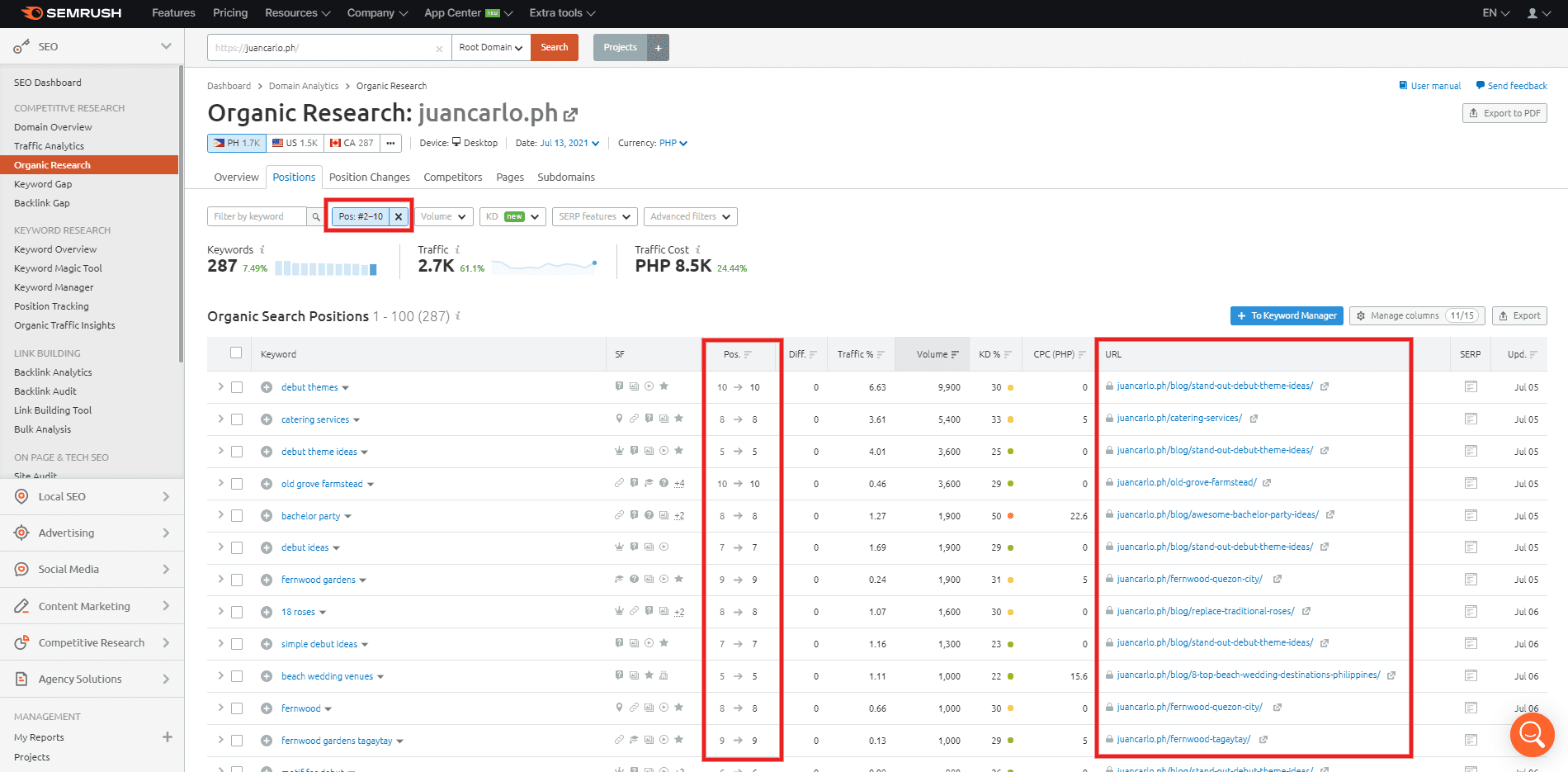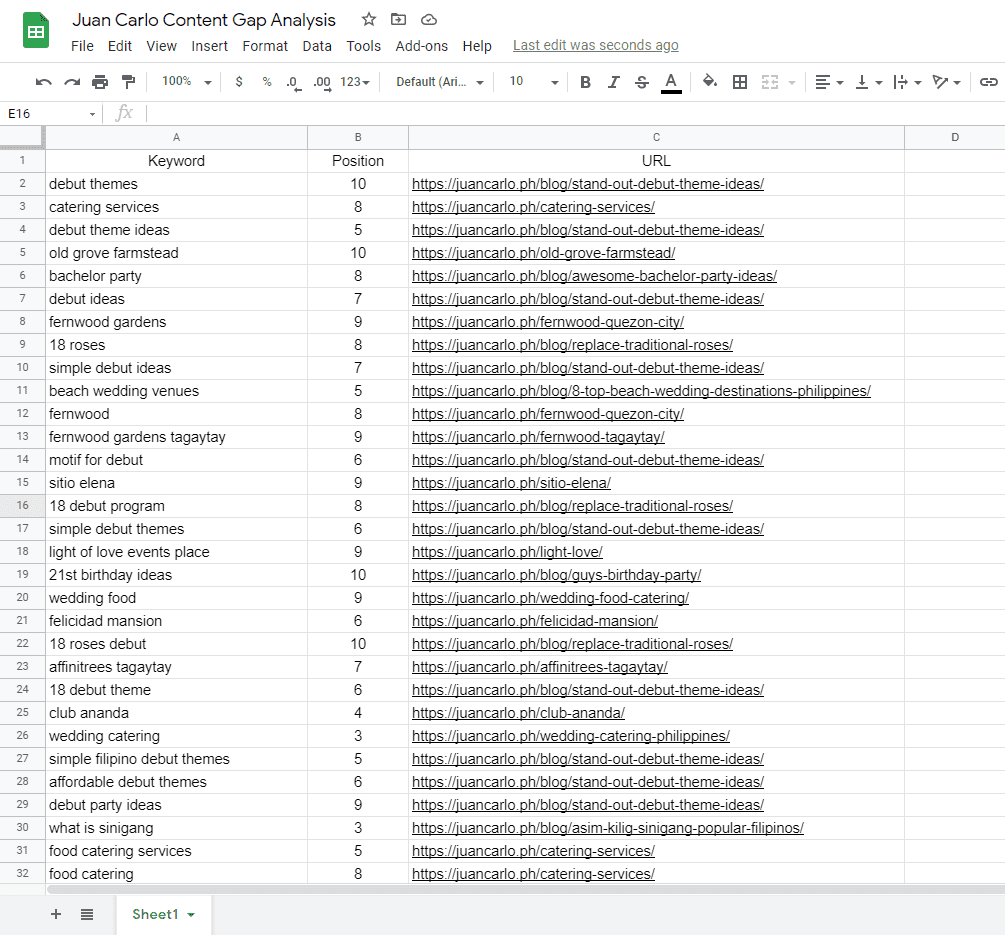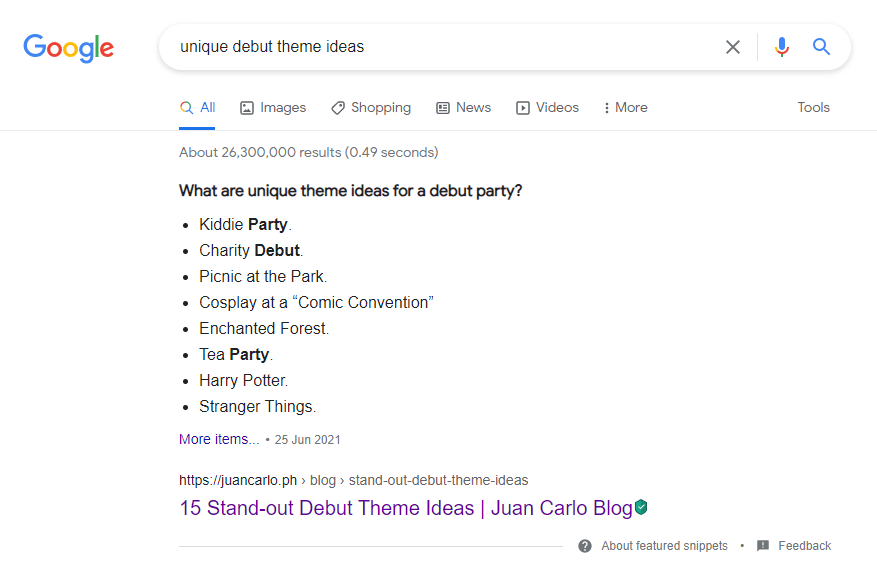
Writing and publishing new content is an industry-standard for SEOs. New keywords are continuously being worked on and targeted for rankings. After a while, these articles will reach their peak potential for rankings but then will start to fall off as new and better articles are published by other websites.
Yes, it’s always good to discover and target new keywords and publish fresh content but that doesn’t mean that the old articles should be forgotten.
That’s when the content gap analysis comes in. Content Gap analysis is a popular SEO optimization strategy because of the traffic boost that it can give to websites with less time and effort as you would put in writing a new article from scratch.
What is Content Gap Analysis?
A content gap analysis is a process where you evaluate existing content on your website and find lapses and opportunities for improvement.
It can be done on blog posts, sales pages, product pages, and more. Basically, anything on your website that has information and value.
Content gap analysis is an efficient SEO strategy because you use existing content and just improve on that. It saves you more time than completely starting a brand new article.
When you publish an article, your goal is to get number 1 at SERPs. Nobody aims for top 2 or top 5. The number 1 spot is where you get the most clicks and that’s what everybody wants.
That’s why you wouldn’t want to leave out old articles especially if there is potential to take the number 1 spot. It could provide a good boost in traffic and possibly bring more sales.
How to do a Content Gap Analysis
Find keywords where your website is ranking for but not at the top of SERPs
- First is you’ll need a tool that could provide you a list of keywords your website is ranking for. I personally use SEMRush organic research tool.
- Set a filter to see keywords where you are already on the first page but still not at the top. I prefer checking out from the top 2 to 10. You could also not limit yourself on the first page. I recommend going down to the 2nd page at most if you want to push articles to the first page and get more traffic.

- Collect keywords that you want to optimize for and the page ranking for those.
- You should also note the rankings for progress tracking. This helps you evaluate whether the improvements you made on the content worked or you might need to make some additional changes.

Study the competition
In Content Gap Analysis, one of the goals is to find out why other websites are outranking your content. The best way to understand what your content is missing is to study your competitors and analyze what makes their content better than your current content.
When studying the competition, you’d want to look at:
- Their title tag and meta description
- Find details about the topic that competitors touch and is missing on your article
- Look for anything that stands out in the page
- Search intent; is Google rewarding transactional or informational intent?
- Keyword and LSI keyword mentions
- Study the tone and delivery
Audit your content and apply necessary changes
Once you’ve collected enough data, it’s time for you to evaluate your current content and identify what you are lacking. You should take notes from what your competitors are doing and not just look at how to copy them but look at how to do better than them.
Take note of which information they have that your page doesn’t have and consider adding those. Simply adding word count isn’t the way here as well. Remember: you’re not making your content longer, you’re adding value to it that Google won’t be able to resist. Freshness is also important. Check for any details that are outdated.
If you need to remove some of the existing content and replace them with more updated content, then you could do so. You may also consider design changes. A complete overhaul of content is rarely needed. You should do it only if the intent of the old content is completely different from the intent Google is rewarding.
Track your Progress
Once you’ve implemented improvements from your content gap analysis, it’s now to track whether the changes you’ve made actually helped the article move up. Just like any other changes you make for SEO, felt effects do not immediately happen. Here’s a sample:
Our team wrote an article for one of our clients who is a catering company in the Philippines. The article is targeting the keyword “unique debut theme ideas” and it was published back in August of 2017. It reached its peak traffic back in early 2018 and then started a downtrend.
We then did a content gap analysis on the article and optimized the article in December 2018. It wasn’t until February of 2019 when the rankings started picking up. We also optimized the article for featured snippets and once we got the top spot, traffic started reaching new heights and was able to maintain higher monthly traffic compared to its previous numbers.

The changes we made weren’t so big. The article listed 7 Unique Debut Theme Ideas and we improved it to 15 ideas. Added a featured snippet bait and that’s it! We continued updating some of the information in the article and we were also able to retain the featured snippet spot after 4 years after it was initially published.

Key Takeaway
The content gap analysis is one of my favorite SEO strategies because of its holistic approach to SEO; you continue to publish fresh content but also make sure that old content is taken care of and still contribute to the whole website’s numbers.
If you’re a SEO content writer, the content gap analysis is a useful strategy if you’ve hit roadblocks in finding new keywords and topics to write. It is never wrong to capitalize on the current content your website has.
The post Content Gap Analysis SEO Guide appeared first on SEO Services Agency in Manila, Philippines.
#seo #seoservices #SEOServicesCompany #SeoServiceProvider #seoexpert #digitalmarketingtips #marketing #socialmediamarketing #socialmedia #webdesign #blogger #onlinemarketing #marketingdigital #contentmarketing #website #searchengineoptimization #advertising #internetmarketing #marketingstrategy #entrepreneur #digitalmarketingagency #ecommerce #webdevelopment #digital #design #marketingtips #sem #websitedesign #smallbusiness #graphicdesign





